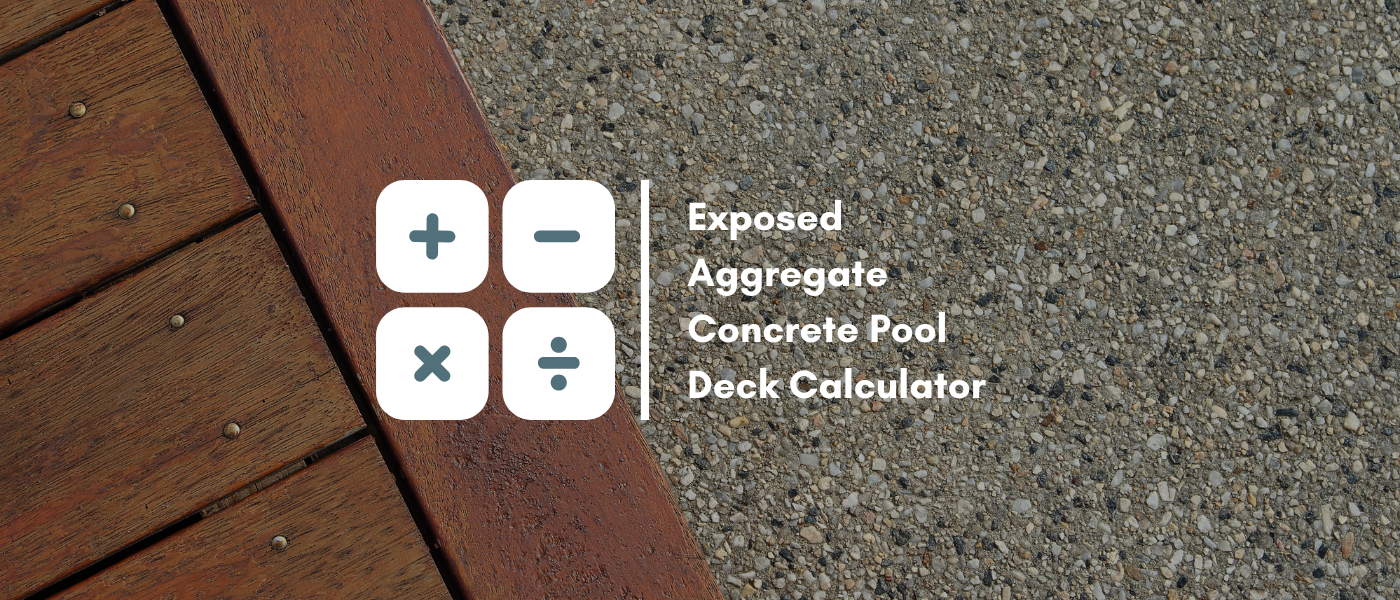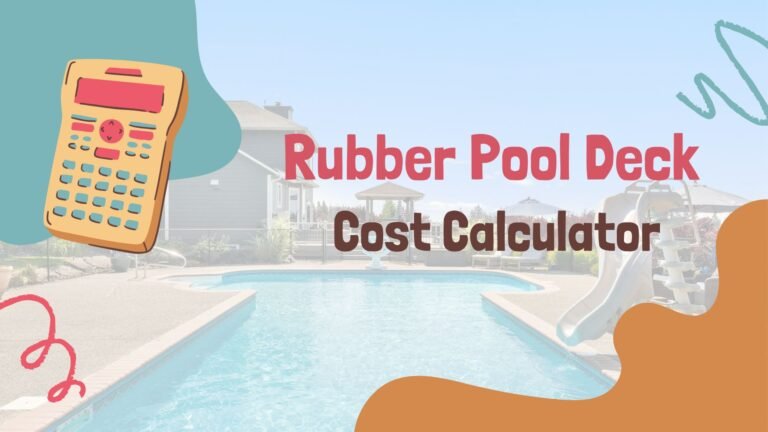How does it works?
This calculator works in imperial and metric system units, allowing you to easily calculate the cost and materials needed for your exposed aggregate concrete pool deck project. United States and Canada uses feet, inches and pound to measure the length, width, and depth of the pool deck while countries like Australia and United Kingdom use meters, centimeters, and kilograms. We make it easy for you to switch between these systems by providing a toggle button at the top of the calculator.
Calculating Area:
To start the calculation process, you will need to know the dimensions of your pool deck. This includes the length, width, and depth of the area that you want to cover with exposed aggregate concrete.
Dry Volume:
First, you will need to calculate the dry volume of your pool deck. This is the total amount of space that needs to be filled with concrete. To calculate this, use the following formula:
Dry Volume = Length x Width x DepthMake sure to use consistent units throughout this calculation (i.e. all measurements should be in either feet or meters).
Wet Volume:
Next, you will need to account for the added moisture from the water and cement mixture. This is known as wet volume and can be calculated by multiplying the dry volume by a factor specific to the type of concrete being used. This factor typically ranges from 1.54 to 1.65, with 1.54 being the most commonly used in residential projects.
Wet Volume = Dry Volume x 1.54Determine Mix Ratio:
Common ratios (Cement:Sand:Aggregate) for exposed aggregate pool decks are 1:1.5:3 or 1:1:2. By knowing the mix ratio, you can accurately calculate the amount of each component needed for your project. Keep in mind that these ratios may vary depending on the intended use and strength requirements of the concrete.
For a 1:1.5:3 mix:
Total Parts = 1 + 1.5 + 3 = 5.5Cement:
Cement Volume = Dry Volume/5.5 * 1Sand:
Sand Volume = Dry Volume/5.5 * 1.5Aggregate:
Aggregate Volume = Dry Volume/5.5 * 3Convert Volumes to Weight:
The disturber often uses weight instead of volume to determine the quantity of materials needed for a concrete mix. This is because weight can be more accurate and easier to measure than volume, which may vary depending on the moisture content of the materials.
Cement:
- Density: 1440 kg/m³ (metric) or 94 lb/ft³ (imperial).
- Bags: 1 bag = 50 kg (metric) or 94 lb (imperial)
Sand:
- Density: 1600 kg/m³ (metric) or 100 lb/ft³ (imperial).
Aggregate:
- Density: 1450 kg/m³ (metric) or 90 lb/ft³ (imperial).
Waster Factor:
When calculating the quantity of materials needed for a concrete mix, it is important to consider the waste factor. This refers to the amount of material that may be lost or unusable during the mixing process. The waste factor can vary depending on various factors such as the consistency of the mix, accuracy of measurements, and skill level of the workers.
To ensure that you have enough materials for your concrete project, it is recommended to add a waste factor of 10% – 15% to your initial calculations. This accounts for any potential losses during mixing and pouring.
Estimating Cost:
After getting the required amounts of materials, the next step is to estimate the cost of your concrete mix. This can be done by calculating the total weight or volume of each material needed and then multiplying it by their respective unit costs.
Depending on market prices and availability, we already mentioned average cost ranges for each material. However, keep in mind that these prices can vary greatly depending on location and factors such as transportation costs.
To get a more accurate estimate, it is recommended to contact local suppliers and request quotes for the specific materials needed for your project. This will also allow you to compare prices and choose the most cost-effective option.
Apart from the cost of materials, other factors that can affect the overall cost of concrete are labor and equipment expenses. If you’re hiring professionals to pour and finish the concrete, make sure to factor in their fees as well.





